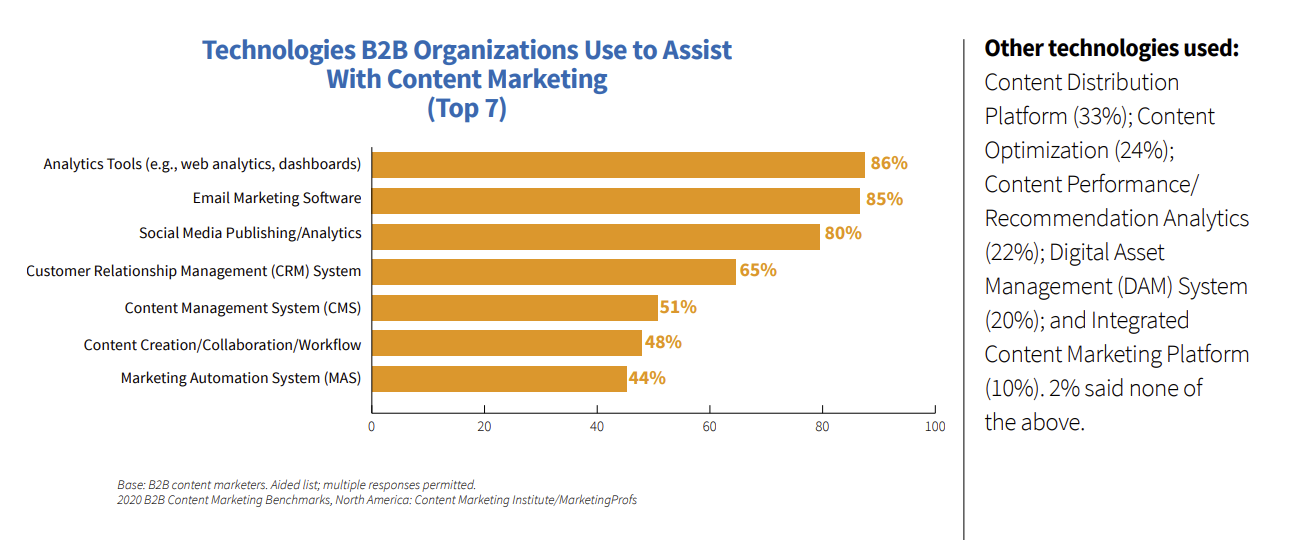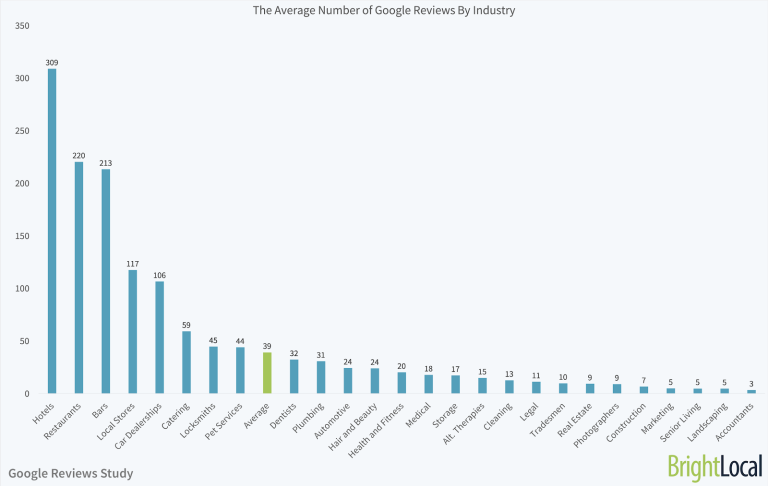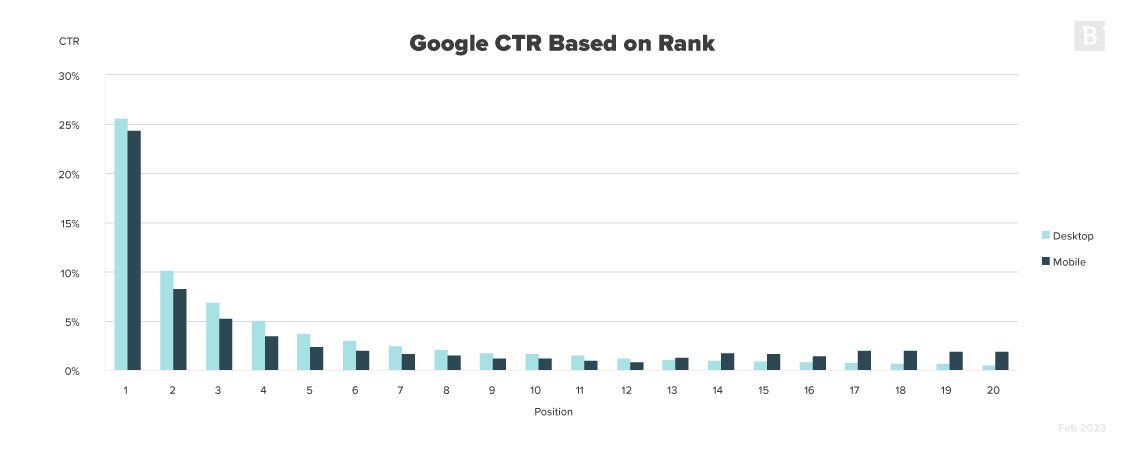Following the latest and greatest B2B marketing trend may not revolutionize your business, but the knowledge can help you keep a pulse on the competition. When you can take a step back and look at your place in the market and the trends impacting it, you’ll be able to make more strategic decisions.
B2B digital marketing is constantly evolving as new technologies take hold and consumers change their purchasing habits. At the beginning of last year, your company might not have had TikTok on its list of marketing channels, but today? It’s definitely worth considering.

What Is B2B Marketing?
Business-to-business marketing, referred to most commonly as B2B marketing, is the practice of marketing products or services to other businesses — as opposed to typical individual consumers, which is B2C marketing.
Since a B2B business isn’t trying to market to the general public, the B2B content it includes in its marketing campaign can focus more on the bottom line for buyers. Most B2B buyers are corporate leaders and decision-makers, so their No. 1 priority is the return on investment (ROI) and how a product or service affects business. That’s not typically high on the everyday consumer’s list of purchasing needs.
By keeping up with new marketing trends, B2B marketers can create personalized and competitive content (especially on social media, but more on that later) that resonates with B2B customers. Strong B2B brands have the ability to sell their products and services in such a way that acknowledges that their consumers are businesses rather than ordinary individuals, and they effectively tailor their messaging accordingly. They speak to their consumers from a business viewpoint, demonstrating a clear understanding of how their offering can meet their customers’ business needs.
A Snapshot of B2B Marketing Spend
It’s no surprise that the last couple of years have had a major effect on digital marketing spend, due to COVID-19, economic volatility and more. However, B2B content marketing spend continues to grow, especially in the digital space. According to data from Insider Intelligence, B2B companies will spend over $18 billion on digital ads by 2024.
With people splitting more of their time between home and the office due to hybrid and remote work, B2B advertisers focused their attention on reaching their target audience through desktop formats. Webinars and interactive virtual events saw a huge increase in popularity.
Although many employees will be returning to the office as the spread of COVID-19 slows down, digital marketing will remain a top priority for marketers working to appeal to the B2B buyer rather than a B2C audience.
B2B Marketing Trends for 2025
This year promises to be one of great change for nearly every industry — did someone say digital transformation? — so let’s take a look at the trends influencing B2B organizations today.

Marketing Automation Adoption and Integration:
The content marketing supply chain is ripe for automation at nearly every stage. From keyword research and creation to distribution and measurement, the proliferation of marketing automation tools, plugins and platforms has made content more efficient and cost-effective than ever.
Global marketing automation spending is expected to increase to $14,180.6 million by 2030. Almost 100% of surveyed respondents agree that automation is crucial to marketing success, especially when it comes to email marketing. Various technologies are often integrated, so automation is practically inescapable in this era of marketing – and that’s a good thing.

Diversified Content
Consumers — individuals and businesses alike — are accustomed to consuming heaps of the same old rinse-and-repeat marketing content to the point where it’s often no longer effective. The solution? Diversify the kind of content you create and put out there. The key to an effective marketing campaign is to produce a variety of content from blog articles designed for SEO and Google Ads to videos and social media posts (more on those in a bit).
An effective B2B company has a keen ability to locate its customers on its preferred platforms and to customize its messaging appropriately. The kind of content they post on LinkedIn is going to be wildly different from the copy they have on their website blog.
On that note, B2B firms must integrate their different marketing channels to support the buyer throughout the entire buying journey. If a B2B buyer clicks on a sponsored ad your business put on Facebook, it needs to take them to your website services page. Integrating diversified content and marketing platforms will make or break a B2B brand.
TikTok
On the topic of diversified content and finding your preferred B2B customer, you’ve got to know where your business needs to be marketing itself. And, increasingly, that place is TikTok. Despite the privacy concerns plaguing the social app, businesses are using it and finding success.
Don’t believe us? Huge names in their respective industries have found massive success on the app, especially when it comes to brand awareness. Take Shopify, for example — it’s not exactly a company that can be called B2C. So, what’s it doing on TikTok? Gaining almost 120,000 followers, most of which are entrepreneurial start-ups.
TikTok might not get conversions from existing customers, but it’s definitely going to get its name out there. And, in the age of saturated markets, brand awareness is paramount.
Customer Experience and Trust
Your B2B marketing strategy needs to be customer-centric if you want to improve B2B customer experience. This is one digital marketing trend that will never go away. It’s still of the utmost importance, and that’s not up for debate. Customer experience has played a huge role in many of the transformative efforts developed as a result of marketing digitalization. Could you imagine going to a virtual trade show just 3 years ago? Probably not.

With many B2B buyers working remotely since 2020, brands focused more heavily on creating engaging and interactive experiences. This, of course, came with challenges. After all, people stuck at home are surrounded by distractions including every piece of media ever created. How do you compete for someone’s attention when they can pull up the latest theatrical movie release on their smartphone?
Interactive elements that improve the customer experience like surveys, polls, games and breakout sessions can help any B2B brand capture its audience’s attention. More immersive digital experiences are still needed to engage audiences that are already growing bored with basic webinars. A good way to make experiences more interactive for your audience is by actively using trackable QR codes in your media.
These trends are certainly influenced by generational demographics. Presently, 60% of lead B2B buyers and financial approvers are now millennials, so the above customer-experience expectations are innately ingrained into their lifestyles and purchasing habits. Especially based on their upbringing in digital-first environments. A large B2B software vendor, for example, must have faster problem-resolution protocols and authentic organic search presences that they may not have needed years ago.
Bad reviews on Google My Business, negative commentary on social media and a lack of positive referrals can lead to irreparable reputational harm and fewer leads. Furthermore, poor UX on mobile sites and apps, incessant cold calls or emails and difficulty locating information online immediately turn off today’s B2B buyer, eroding trust, loyalty and satisfaction.
B2C brands have dealt with this reality in front of our eyes, but B2B brands will now confront the same customer-experience challenges moving forward.
Artificial Intelligence Strategy
One of the ways companies are making their customers’ lives easier is through the use of artificial intelligence (AI). Chatbots, for example, give consumers a convenient way to get an answer to a simple question. Many businesses have streamlined basic helpdesk processes with chatbots, basically functioning as 24/7 customer self-service. This frees up customer service agents’ time to solve more complex problems.
Chatbots have certainly grown in adoption, but they are but one variation of AI for marketers. Programmatic advertising marketplaces are more commonly integrating AI into their ad buying techniques, connecting publishers and advertisers with more efficiency, speed and accuracy – and at a price point that’s already pre-set within the system.
AI is still relatively nascent in the content marketing industry from the standpoint of actual production. It can help decipher structured data sets and pull out key insights through machine learning, but turning that information into organic content is much more difficult.
That’s not stopping marketers from experimenting, however. And rightfully so.
For example, a tool like MarketMuse can help B2B marketers better understand what their audiences want to read about. Leveraging machine learning, MarketMuse quickly analyzes search engine results pages (SERPs) to offer customized guidance on how to improve SEO efforts. In niche B2B industries, this insight can make the difference between ranking in the top spot and not ranking at all.
Short, Focused Videos:
Now that advanced digital marketing strategies like video content are more accessible, these are tools that B2B marketers shouldn’t overlook. In fact, they can’t afford to dismiss this resource.
Video marketing is especially powerful for B2Bs, and can bring a more visual aspect to the buyer’s journey. Currently, more organizations are leveraging case studies for video content to support their marketing efforts. And this trend is creating traction in the B2B market – right now, a whopping 95% of B2B buyers watch videos as part of their product research ahead of conversion.
Video advertising spend is likely to continue increasing in 2023. Streaming video has grown into something akin to a survival tool as people spend more time at home. Videos not only entertain but also grab attention and educate. B2B buyers can benefit from branded videos by learning about new trends and gaining new skills. Global video advertising spend is expected to grow to $95 billion by 2024, up from $62 billion in 2021.
But, B2B companies would do well to remember that video isn’t just for YouTube anymore. Facebook, Twitter, LinkedIn and Instagram all support video. In fact, Instagram’s algorithm prefers video so much that some users post still images overlaid with music so that the algorithm reads it as a video! Many Instagram users create short “reels” that mimic TikTok videos, which brings us to…
TikTok: The videos created and posted there are often cross-posted on all other social media platforms. So, with just one short, attention-grabbing and value-laden video, you can market to potentially millions of B2B buyers across all your social media channels.
Social Media
With over 900 million members, LinkedIn is still the top place for B2B marketers to reach their audiences. The professional networking site replaced traditional in-person events almost completely in 2020, which means even more professionals are engaged on the site. LinkedIn’s live streaming feature enables brands to speak directly with customers and then leverage the recording as a valuable asset going forward.
And while Facebook, Twitter and Instagram remain as top places to reach customers, a new platform gained popularity: TikTok. While the primary demographic on the platform skews young, the same could be said for the early days of any other social networking platform. Getting on board now can position B2B brands to grow their influence on the platform greatly in 2023 and beyond. The video-centric platform is perfect for creative marketing efforts that have a chance to go viral.
However, as important as TikTok is becoming in the B2B sphere, B2B businesses still need to focus on other social media platforms, specifically Twitter and Instagram. Why? Because that’s where the millennials are. Take your B2B marketing content and tweak it to follow each social media channel’s best practices, and you’ll undoubtedly find success.
Local Search Optimization
One underrated and potentially overlooked component of 2023 SEO is local search. It was important last year, and it’s still important this year. If you’re wondering why, the answer might be painfully obvious: It puts your business on a B2B buyer’s radar.
Google My Business listings have traditionally been most useful for consumer-facing brands with geo-targeted marketing and sales strategies. Google Maps and organic results in Google SERPs scrape business data from GMB, allowing searchers to find info about organizations, the products they sell, their physical locations, their contact info and user reviews.
B2B brands have been slower to adopt Google Maps marketing strategies or even to completely populate their GMB listings, not to mention other online business directories like Yelp, BBB, BizJournals and Glassdoor, but this is changing.
By forgoing these localized marketing methods, B2B brands may be disrupting the buyer journey of their prospects. If the Knowledge Panel on the right sidebar of Google SERPs displays incorrect information, or it shows that you only have locations in certain regions, searchers may just turn away, believing you’re not equipped to help them in their journey.
So, if you’re a B2B company, you need to ensure that your potential customers can find you — literally. With so much competition, you need to be on the map, and we don’t mean that figuratively.

Balancing Value and Promotion
With the almost unfathomable amount of competition in every market today, B2B brands need to ensure they’re striking the perfect balance between providing valuable offerings and promoting said offerings. It’s all good and well to have the perfect marketing campaign (or the closest you can get to one), but you need to follow through with an impeccable product or service.
The converse is true, too. You can create and sell the most wonderful, almost infallible offering. But, what good is that if no one knows about it? You have to put yourself (or rather, your business) out there and make your target market aware of what you’re selling.
B2B consumers don’t want to be flooded with advertising if they don’t know that your brand is worth its salt, so be sure to capitalize on good reviews, too.
Re-optimization
There’s too much content on the web. We know that.
So, flooding SERPs with new content isn’t really the best way to break onto Page 1. Since fresh content requires starting from scratch with external link accrual and waiting for Google to actually index and rank your page, your time-to-rank can be too long to produce the results you’re looking for more immediately.

And as the chart above shows, if you’re not ranking in the top three spots in SERPs, you practically don’t exist.
Re-optimizing existing posts, on the other hand, allows you to retain your current URL structure and your page’s already-earned link equity and SERP positioning – you’re just making it even better!
“Better” could mean updating data with more recent findings, replacing older imagery and expanding upon certain subtopics to improve the comprehensiveness of the page as a whole.
We’ve followed this process for over a year now and the results have been just as we expected, including getting 65% of our product landing pages ranked on Page 1 of Google.
B2B brands are currently ramping up their development of research-driven content and short-form content, specifically. Blog posts (less than 3,000 words) are ideal formats for continuous optimization over time, as they typically need just minor adjustments to propel higher in SERPs year after year.
Embracing What Comes Next in Marketing
Sadly, no one can predict the future. But, based on previous and current patterns, we can take a pretty good educated guess as to what we can expect to see in the very near future. No matter what comes their way, it pays for B2B businesses to be prepared.
As society slowly starts returning to the pre-pandemic “normal” in many ways, you need to be ready to adapt your digital marketing strategy accordingly. Keeping an eye on what’s happening around you in your industry is paramount.
Editor’s Note: Updated December 2024.







